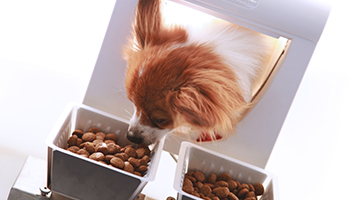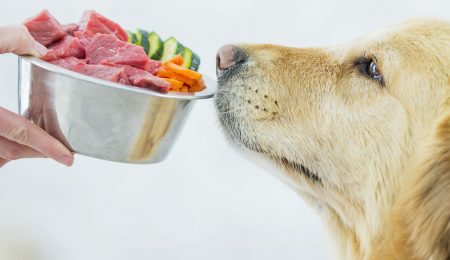What do we refer to with « versus or monadic tests »?
Sensory performance of pet foods is commonly checked through animal observation at meal time. 1, 2 or more products can be offered to the pet simultaneously for this sensory evaluation.
Most frequently used methods are the versus and monadic tests. In both cases, as dogs and cats do not speak, we measure the quantity of food eaten, but each protocol delivers a different answer about consumption.
![]()
The versus test involves offering the dog or cat a choice between 2 products in order to analyze the diets’ olfactory attractiveness and the preference expressed by the pet. Criteria evaluated: First choice (first product eaten), Intake ratios and Distribution of consumption.
![]()
The monadic test consists of feeding only one product and analyzing animal acceptance. The main criterion measured is the percentage of the ration eaten.
What are the advantages/drawbacks of each method?
![]()
Versus tests correspond to a paired comparison, but products are tested simultaneously in similar conditions. Additionally, these tests deliver a higher level of discrimination; consequently they are more adapted to measuring fine differences.
![]()
Monadic tests assess a pet food’s acceptability level. Testing conditions are closer to the “natural” in-home feeding experience, but they are less accurate than versus tests.
In which context would you advise each method?
![]()
We would advise the use of versus tests at various stages of product development: to measure the impact of a low dosage ingredient, the impact of a process change, or the impact of a switch to a new raw material supplier, for instance. These tests are key to assess the impact of one variable only on the pet food palatability and sensory performance.
![]()
The monadic test should be used for final validation of a new or modified formula and for benchmark comparisons, potentially at home.
Both methods deliver different and complementary information about pet foods’ palatability and performance.
Take-home points
- Monadic and versus tests measure different criteria and are not interchangeable.
- Versus tests are best used to assess the effects of one specific variable.
- Monadic tests are more useful for validating a new or modified formula.
- Both tests provide valuable input about a diet’s palatability and performance.




* required fields